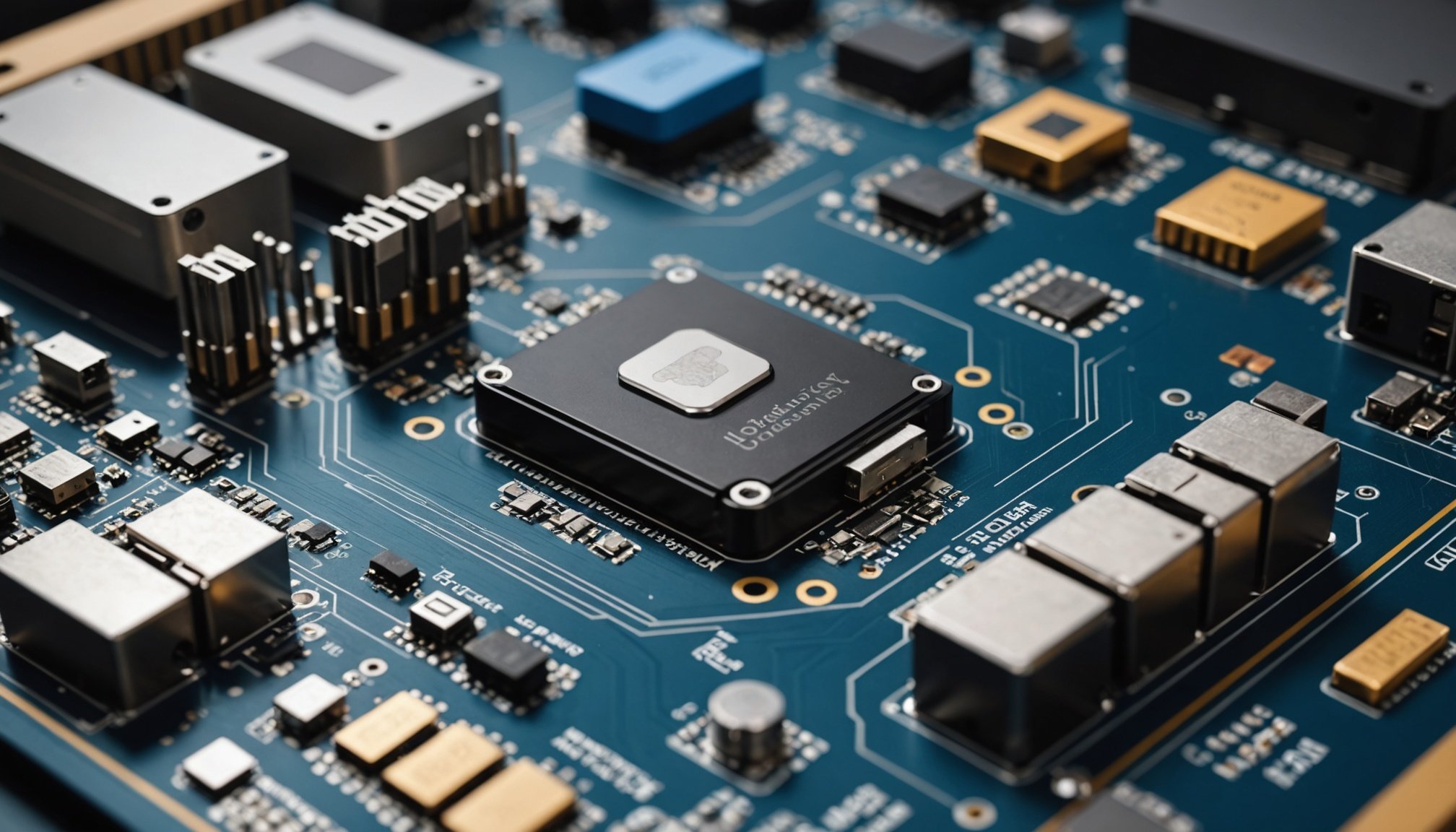Unlock Top AI Model Efficiency: Proven Techniques for Training on Budget-Friendly Hardware
In the rapidly evolving world of artificial intelligence (AI), the quest for efficient and cost-effective model training has become a critical focus. With the increasing complexity of AI models, particularly deep learning models, the demand for powerful and often expensive hardware has risen significantly. However, there are several proven techniques that can help you achieve top AI model efficiency even on budget-friendly hardware.
Optimizing Model Size and Complexity
One of the primary challenges in training AI models, especially large language models (LLMs) and deep neural networks, is their enormous size and the computational resources they require. Here are some techniques to optimize model size and complexity:
Have you seen this : Mastering Accuracy: Essential Techniques to Optimize AI-Driven Financial Prediction Models
Model Pruning
Model pruning, or simply “pruning,” involves identifying and removing redundant or less critical parameters from the model. This technique reduces the model’s size and computational requirements without significantly compromising its performance. For instance, by identifying non-essential weights in neural networks, you can compress the model, reducing its memory footprint and improving execution speed on limited-capacity devices[2].
Quantization
Quantization is another powerful method for reducing model size. It involves representing numerical values with lower precision, such as converting floating-point numbers to fixed-point or lower-precision integer representations. This approach can significantly reduce memory requirements and computational complexity, making the model more efficient and less resource-intensive. However, it may require fine-tuning post-quantification to maintain the model’s performance[2].
In parallel : Essential Approaches for Building an Effective Real-Time Machine Learning System to Combat Fraud
Knowledge Distillation
Knowledge distillation is a technique where a smaller “student” model is trained to replicate the predictions of a larger “teacher” model. This method allows the student model to achieve similar performance to the teacher model but with a much smaller size and faster execution times. This process is particularly useful for deploying AI models on mobile devices or IoT systems where resources are limited[2].
Leveraging Distributed Learning and Multi-Cloud Environments
Distributed learning and multi-cloud environments can significantly enhance the efficiency of AI model training.
Distributed Model Training and Inference
Distributing the training and inference processes across multiple processors, devices, or cloud environments can optimize model training and user experience. By leveraging parallel processing capabilities, you can speed up the training process and improve real-time performance. For example, adapting the model architecture and training process to utilize the specific capabilities of the hardware (e.g., CPU or GPU) on which it will be applied can optimize both the learning and inference processes[1].
Multi-Cloud Environments
Multi-cloud environments have become the backbone of optimized AI applications due to their ability to connect AI workloads and ecosystem plugins in distributed environments. These environments allow for the efficient use of resources, better scalability, and improved performance. By managing traffic and resource pooling intelligently, you can ensure that your AI models are more efficient, scalable, and cost-effective[1].
Efficient Use of Hardware Resources
The efficient use of hardware resources is crucial for optimizing AI model training on budget-friendly hardware.
CPU, GPU, and DPU Utilization
While GPUs are often the go-to choice for AI model training due to their parallel processing capabilities, CPUs and Data Processing Units (DPUs) can also be utilized effectively. For instance, using CPUs for certain tasks can help in load balancing and reducing the overall cost of hardware. DPUs, designed specifically for data processing, can further optimize the training process by handling data-intensive tasks efficiently[1].
Energy Efficiency
Energy efficiency is another critical aspect, especially in the context of sustainability. Quantified models, for example, consume less energy during execution, making them more environmentally friendly. This is particularly relevant in a world where minimizing energy consumption of technologies is essential. By adopting energy-efficient models, you can ensure that your AI systems operate in a more ecological manner while maintaining high-quality services[2].
Advanced Testing and Validation Techniques
Thorough testing and validation are essential to ensure the performance and reliability of AI models.
Cross-Validation and Hyperparameter Tuning
Cross-validation involves fractionating the data to train and validate the model iteratively. Hyperparameter tuning adjusts the model’s parameters to optimize performance. These techniques help in avoiding overfitting and ensuring that the model generalizes well to new data[3].
Performance Testing and Stress Testing
After training, the model undergoes performance testing to evaluate its accuracy, precision, recall, and other relevant metrics. Stress testing evaluates the model’s performance under extreme or unexpected inputs, helping to identify vulnerabilities and improve robustness. Security evaluation is also crucial to identify potential vulnerabilities to adversarial attacks[3].
Explainability and Transparency
Using techniques like SHAP (SHapley Additive exPlanations) and LIME (Local Interpretable Model-agnostic Explanations) can improve the interpretability of AI models. These tools provide insights into the model’s decision-making processes, enhancing transparency and trust in AI systems. This is particularly important for debugging and ensuring alignment with ethical standards[3].
Practical Insights and Actionable Advice
Here are some practical insights and actionable advice to help you optimize AI model training on budget-friendly hardware:
Use Pre-Trained Models
Pre-trained models can significantly reduce the time and resources required for training. Techniques like transfer learning allow you to adapt a pre-trained model to a new task, leveraging the knowledge it has already gained. This approach is particularly useful for deep and complex models[1].
Fine-Tuning
Fine-tuning a pre-trained model on your specific dataset can enhance its performance without requiring extensive computational resources. This process involves adjusting the model’s parameters to better fit your data, which can be done on less powerful hardware compared to training a model from scratch[1].
Data Efficiency
Optimizing the use of training data is crucial. Techniques like data augmentation and the use of synthetic data can help in reducing the need for large datasets. Synthetic data, generated using methods like GANs (Generative Adversarial Networks) and VAEs (Variational Autoencoders), can mimic real-world data properties, making it useful for testing and training[3].
Comparative Analysis of Optimization Techniques
Here is a comparative analysis of some key optimization techniques:
| Technique | Description | Advantages | Challenges |
|---|---|---|---|
| Model Pruning | Removing redundant parameters | Reduces model size and computational requirements | Requires careful evaluation to avoid performance degradation |
| Quantization | Representing values with lower precision | Reduces memory and computational complexity | May require fine-tuning to maintain performance |
| Knowledge Distillation | Training a smaller model to replicate a larger model | Achieves similar performance with smaller size | Requires careful selection of teacher and student models |
| Distributed Training | Distributing training across multiple processors/devices | Speeds up training process and improves real-time performance | Requires complex setup and management |
| Transfer Learning | Adapting a pre-trained model to a new task | Reduces training time and resources | May not always generalize well to new tasks |
Real-World Examples and Anecdotes
Case Study: Optimizing Language Models
For instance, consider the optimization of large language models like LLaMA 3.1, which requires up to 810 GB of memory to function correctly. By applying techniques such as quantization and model pruning, it is possible to reduce the model’s size significantly, making it deployable on more accessible hardware. This not only reduces the cost and energy consumption but also makes the model more efficient and faster to execute[2].
Example: Using Multi-Cloud Environments
A company leveraging multi-cloud environments for their AI applications can connect AI workloads and ecosystem plugins efficiently. This setup allows for better resource utilization, scalability, and performance optimization. By managing traffic and resources intelligently, the company can ensure that their AI models are more efficient, scalable, and cost-effective[1].
Optimizing AI model training on budget-friendly hardware is a multifaceted challenge that requires a combination of several techniques. By reducing model size through pruning and quantization, leveraging distributed learning and multi-cloud environments, and using advanced testing and validation techniques, you can achieve significant improvements in efficiency and performance.
As AI continues to evolve, the importance of making these technologies accessible and adaptable to various applications will only grow. By adopting these proven techniques, you can ensure that your AI models are not only efficient but also cost-effective, making AI more accessible to a broader range of users and applications.
In the words of a leading AI researcher, “The future of AI lies in its ability to be efficient, scalable, and accessible. By optimizing our models and leveraging the right hardware, we can unlock the full potential of AI and drive innovation across various industries.”
By following these insights and techniques, you can unlock top AI model efficiency even on budget-friendly hardware, paving the way for more widespread and impactful AI adoption.

